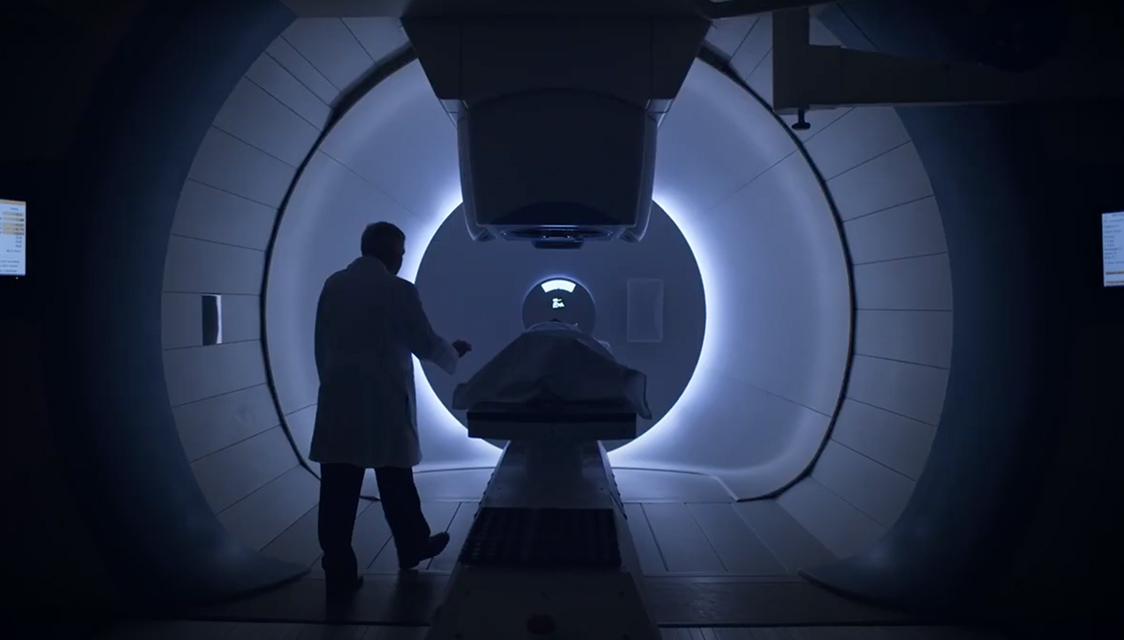Innovations in proton therapy for prostate cancer treatment
By Christina L. Mershell
Share:

Making cancer treatment better for patients, both in improving cure rates and in reducing side effects, drives research and innovation at the UF Health Proton Therapy Institute. In the field of radiation oncology, these improvements are often made at microscopic or subatomic levels that are not visible to the human eye. For these discoveries, we turn to a group of medical physicists and doctors who are highly skilled in particle physics, medical physics and human anatomy. They use their knowledge to help develop and validate the treatment plans used in conventional radiation, such as X-rays or photons, and in advanced radiation oncology technologies like proton therapy.
When it comes to effective prostate cancer treatment, proton therapy does an excellent job of targeting the treatment area while also minimizing the amount of radiation to nearby healthy bowel, rectal and bladder tissue. As an academic health center, the UF Health Proton Therapy Institute is at the forefront of ongoing research in how to make the most of proton therapy to further reduce potential side effects and improve patient outcomes.
The medical physics team has a deep understanding of the physical properties of protons, including how and why these properties make proton therapy a highly effective cancer treatment. Learn more about how proton therapy works here. All forms of radiation, including protons, are capable of killing cancer cells. And each type of radiation has a specific amount of energy. When proton radiation interacts with a solid, like the body, it transfers some of its energy to the solid. This interaction is called Linear Energy Transfer, or LET. It is this property of LET in proton therapy that researchers at the Institute explored to demonstrate the feasibility of improving prostate cancer patient outcomes by optimizing LET in pencil beam scanning proton treatment plans.
The article published in the peer-reviewed journal Cancers is Potential Therapeutic Improvements in Prostate Cancer Treatment Using Pencil Beam Scanning Proton Therapy with LETd Optimization and Disease-Specific RBE Models. This is a mouthful for those of us who do not have a PhD in medical physics. So, what is the study about? Let’s break it down.
Proton Therapy – Proton therapy is a form of radiation that uses protons instead of X-ray (photon) radiation beams. Since protons have weight and are not just a light wave, they can stop at a desired location in the body, where they deposit the highest dose of radiation.
When you putt a golf ball, you determine the speed necessary to go over any obstacles to make the ball stop where you want it — this is like how proton therapy works. To make sure the radiation stops where we want it to, protons are sent at the speed needed to get through any tissue before they stop at their desired target — the tumor or cancerous tissue. Read more about how proton therapy works.
RBE – RBE is short for Relative Biological Effectiveness. RBE is how much damage is done to cells and tissues in the body during radiation. The higher the RBE, the higher the damage and the greater the potential for cure.
It quantifies how much more effective proton beams are than X-ray beams. For example, if it takes twice as much dose for X-rays to have the same effect as protons, the proton RBE equals two. The RBE multiplied by the proton dose is the equivalent dose if X-rays had been used instead.
LET Optimization – LET is Linear Energy Transfer. The RBE depends on the LET. In a very brief explanation, the damage done/effectiveness of treatment depends on where and when the dose is deposited and how. LET describes how the dose is deposited.
For example, the LET where the proton stops are higher than when it enters the body. The higher the LET, the higher the RBE, or the potential damage to the cells can be. The goal is to place high LET in the tumor to have the optimal effect on the patient’s cancer cells while keeping the LET low in healthy surrounding organs at risk. This helps to reduce side effects.
In review, the research allows us to see if the LET can be optimized to improve patient outcomes, decrease chances of cancer recurrence and maintain low rates of side effects.
The study’s results concluded that incorporating LET optimization with the targeted pencil beam scanning potentially increases the effectiveness of the damage to cancerous cells. More effectiveness means the ability to deliver higher doses of radiation to the target areas, which will likely improve prostate cancer cure rates.
Knowing the LET also allows the physicists to know how much the radiation might affect healthy organs at risk. The goal is to reduce damage to healthy tissue resulting in lower side effects for patients with prostate cancer. Read more about potential side effects to prostate cancer treatment here.
Thanks to medical physicists, the entire radiation oncology team can better understand and optimize radiation treatment plans for each patient. While this is a complex science, the goal is to improve outcomes for cancer patients. Dive into the research yourself here: https://www.ncbi.nlm.nih.gov/pmc/articles/PMC10886728/.
The Medical Physicists Team at the UF Health Proton Therapy Institute
The physicists and staff of the UF Health Proton Therapy Institute are dedicated to delivering proton cancer treatment in a way that takes the entire patient into account. The Institute is a world-class clinical research facility, improving cancer treatment through studies like LET research. The UF Health Proton Therapy Institute is home to a radiation oncology physics residency training program.
The Institute’s interests extend into other clinical and scientific disciplines, including engineering, computer science, medical and legal ethics, social science, health economics, materials science and space technology. This makes for a well-rounded approach to cancer treatment.
Learn More About Proton Therapy for Prostate Cancer
Prostate cancer survivors who chose proton beam therapy at the UF Health Proton Therapy Institute for their prostate cancer treatment share their stories here.
If you’re looking for more information about studies related to prostate cancer treatment and how proton therapy is effective in treating it, please read this blog. The article details a 2016 study of more than 1,300 men treated with image-guided proton therapy for prostate cancer that had not spread, proton therapy provided excellent outcomes (in terms of survival) five years after treatment. In addition, there were low rates of severe side effects, leading to high quality of life per outcomes reported by patients themselves.1
The UF Health Proton Therapy Institute has an entire team, from the medical physicists to nurse case managers and physicians to support staff, dedicated to advancing cancer treatment for prostate cancer patients through research such as the LET optimization study.
Reviewed July 08, 2024, by Michael Vieceli, MS


